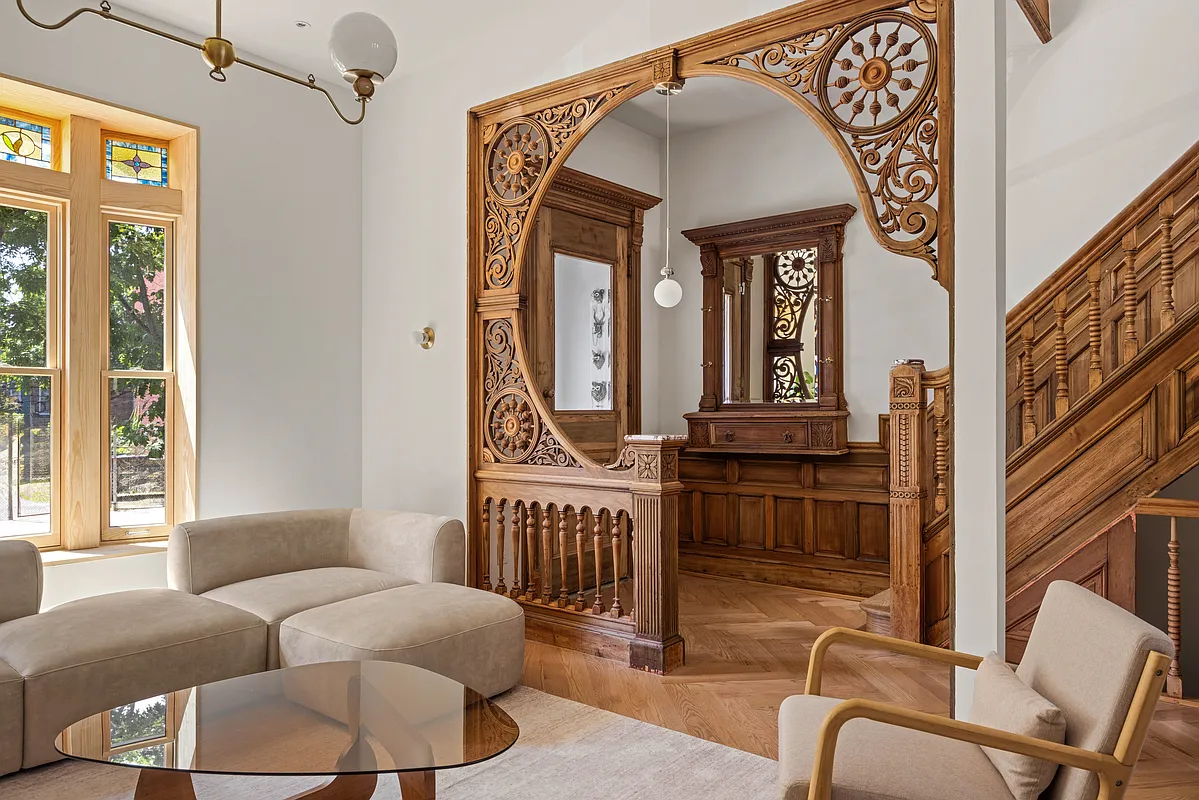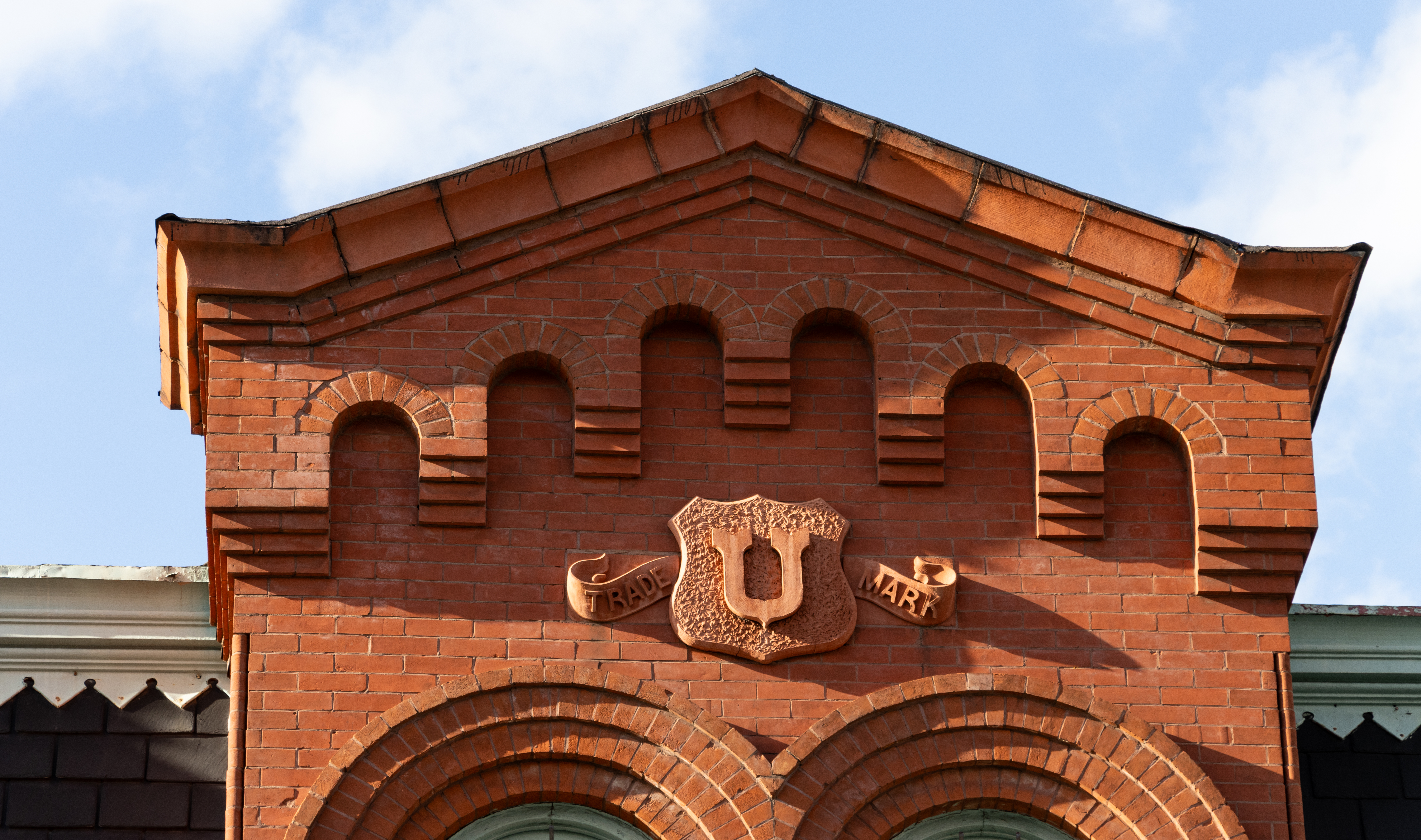Report on 'Invention of Brownstone Brooklyn'
Regular Brownstoner reader/commenter Mopar filed this report about yesterday’s panel discussion on gentrification in Brooklyn emceed by Suleiman Osman, author of the new book “The Invention of Brownstone Brooklyn: Gentrification and the Search for Authenticity in Postwar New York”: Tuesday night’s panel on “The Invention of Brownstone Brooklyn: Race and Gentrification in South Brooklyn” at…
Regular Brownstoner reader/commenter Mopar filed this report about yesterday’s panel discussion on gentrification in Brooklyn emceed by Suleiman Osman, author of the new book “The Invention of Brownstone Brooklyn: Gentrification and the Search for Authenticity in Postwar New York”:
Tuesday night’s panel on “The Invention of Brownstone Brooklyn: Race and Gentrification in South Brooklyn” at the Museum of the City of the New York focused on Brooklyn’s former slums where brownstones now sell for $2 million and up.
“For me, the Park Slope of 2011 is a limousine parked in front of a public school, said “Prospect Park West” author Amy Sohn, explaining that just that day she had seen one parked outside PS 321 waiting for a parent. “I feel the book [Osman’s] is about my life. I came from Mitchell-Lama housing and now we live across from [actor] John Turturro.”
Was the brownstoning movement of the 1960s and 1970s a success? It depends on who you ask. Author of “The Invention of Brownstone Brooklyn: Gentrification and the Search for Authenticity in Postwar New York” Suleiman Osman, who grew up in Park Slope and is a professor of American Studies at George Washington University, did not pick a side.
“If it’s about increasing real estate values, then it’s been very successful,” said Michelle de la Uz, executive director of the Fifth Avenue Coalition. “If it’s about the urban ideal of diversity, then it’s failed miserably. We need public policy with equity and justice at the forefront to achieve that urban ideal we were all attracted to and decided to stay in New York for.”
Back in the 1960s, brownstoners moved to Brooklyn so they could live in “someone’s former mansion” and have more space to raise their families for not much money, related Ken Patton, a founder of the Brownstone Revival Committee. When a neighborhood group planned to picket the Dime Savings Bank for redlining Brooklyn, he held a cocktail party for newcomers and bankers, and convinced the money men to offer mortgages to young, white professional families moving into Park Slope. But first he had to convince them that the newcomers were not “bohemians.”
“I’m a victim of displacement and gentrification,” said audience member and Councilwoman Tish James, who grew up in Park Slope and whose family was forced to move when rents rose. The recent census shows a reverse Great Migration is taking place, with more than 10,000 African Americans moving from New York to the South because they can no longer afford to live here, she said. “There’s a huge disparity in wages and the socioeconomic situation in New York City. It’s rather devastating to walk in your own community and feel like a stranger.”
Brownstoner commenters Amzi Hill and BedstuyMaven attended. Were there any others? What did you think of the panel?





Re the discussion of how people bought in the 1950s: My understanding, based on reading and interviews with people who were there, is that cheap mortgages were offered to white people who wanted to relocate to the suburbs.
To give a specific example: I met a docent at the Tenement Museum (white) who as a child lived in my neighborhood (far East Bed Stuy) in a tenement apartment in the 1950s, just as it was transitioning from white to black. They lived there until he was four or five. Then his parents bought a newly constructed house in the suburbs for $3,000 down.
Those loans were not available in old neighborhoods or to black people.
MM – thank you! I really need to stop relying on the folks of Brownstoner for info- haaaa
What I am impressed with is that Carver bank has stayed true to its roots as am sure they have turned down plenty of offers from major banks to take over
Gem, from the Carver website:
“Founded on November 5, 1948, and named for agricultural researcher and scientist George Washington Carver, Carver Federal Savings Bank formally began operations on 125th Street in Harlem, providing local residents a place to save and obtain mortgages to buy homes in their own communities on January 5, 1949. In February 1961, Carver opened its first branch in the Bedford-Stuyvesant section of Brooklyn and continued expanding its operations in Manhattan, Brooklyn and Queens into the 1990s.
On September 28, 2006 Carver successfully acquired Brooklyn-based Community Capital Bank to complement its savings and real estate lending with small business and non-profit lending across a 10-branch network. On October 24, 1994, Carver Bancorp, Inc. became a publicly traded company and on July 10, 2007 was listed on the NASDAQ stock exchange (CARV). Carver Bancorp, Inc. is the holding company of Carver Federal Savings Bank.
Today, Carver is the largest African- and Caribbean-American operated bank in the United States and channels its capital resources into underserved neighborhoods by reinvesting over 80% of its deposits into the communities we call home.”
BSM – was Carver bank owned by a Black person?
Gem – Carver Federal Saving Bank was founded in 1948. When the founders initially applied for a bank charter they were denied even though they had met all the qualifications. I took several trip to Albany, lobbying by community members and elected official before they were granted a charter.
Carver did write mortgages for African Americans, but without the security for FHA insurance.
MM – I did ask the author why Bedford Stuyvesant was not part of the discussion. He said the covers the 1960’s to the 1970’s and Bedford Stuyvesant was not part of the Brownstone movement.
Didn’t go, but a few thoughts…
1. MM, brilliant as always. I’m not as old as some of those folks with their stories of the good old days, but that was still the Brooklyn I grew up in in the 60’s and 70’s. And people wonder why I miss it?
2. The John Turturro thing. He grew up in Brooklyn. I don’t see the relevance. She’s not living across the street from The Queen.
3. The urban ideal of diversity may have failed miserably in Park Slope in the 2000’s, but it was diverse as anywhere up until about 15 years ago. Ok, maybe 20.
4. Cool link to photos. Did you see the Basquiat family?
NOP – that must hvae been scary to have to go through!
I think I am under the assumption that many families just bought their homes outright even if it meant they scrimped and saved every penny. That’s what people did before the dawn of marketing credit to people – but I understand it would have been much harder for Black families to get loans for homes especially in Black neighborhoods.
Always learn something here!
Gentrification wasn’t a racial thing, it was economic. You needed a certain amount of money and resources to buy and renovate a brownstone, even back then. It was not a poor person’s option.
When I bought in Carroll Gardens over 25 years ago, there was all kinds of negative feelings for the ‘new people’ by the long term Italian occupants. Their children could not afford to live in the neighborhood and if the elders did not own the building they were surely going to be out of their apartment if the house was sold to the ‘new people’ who raised the rents to reflect the purchase price – which was much higher than in the ’70s.
A lot of blame was put on Carroll Gardens real estate agencies for ‘pushing people out’ by marketing the neighborhood and getting very high prices for sellers. More ‘reasoned’ heads blamed the sellers for taking the high prices, knowing that would put their long-term tenants out.
This was not unique to CG. There were the same attitudes in Park Slope and Cobble Hill.
“But couldn’t it be said that most families (of all colors etc) probably didn’t try to get mortgages in the 50’s & 60’s”
Gem – Black people could not get mortgages in certain communities period.
In 1934 the Federal Housing Adminstration (FHA) was created. The FHA insures loans made by banks. The FHA survered several cities map in hand and drew redlines around certain neighborhoods. FHA deems the neighhoods high risk and would not underwrite mortgages in these neighborhoods.
As a result many black people had to save until they had enough money to buy a house or rely on seller held mortgages usually with interest rates above market rates.